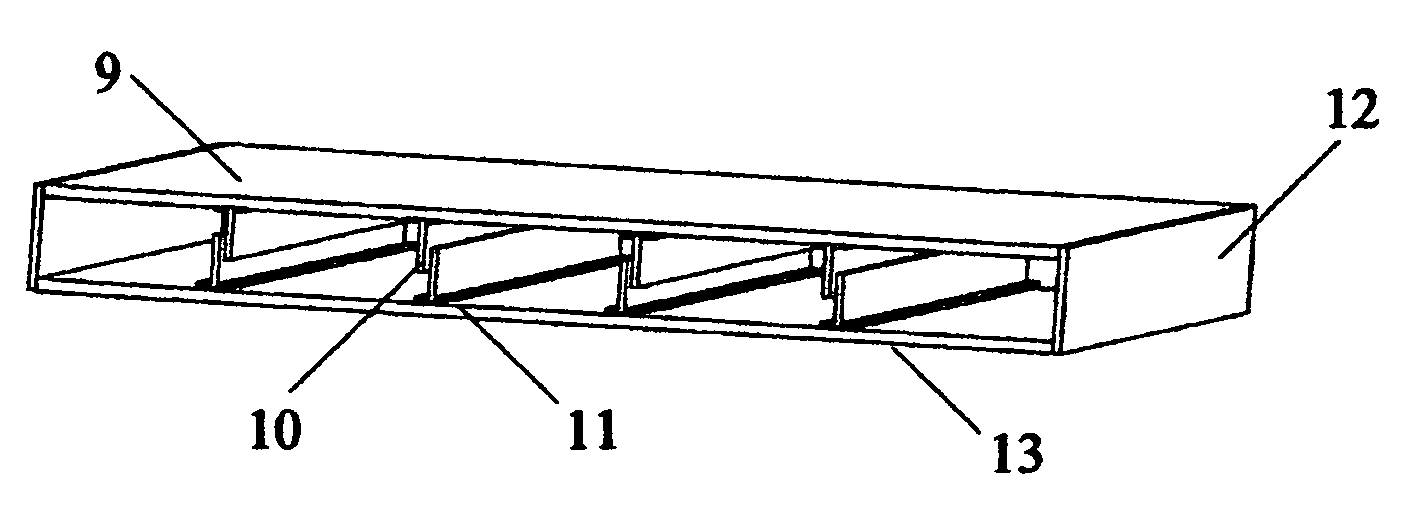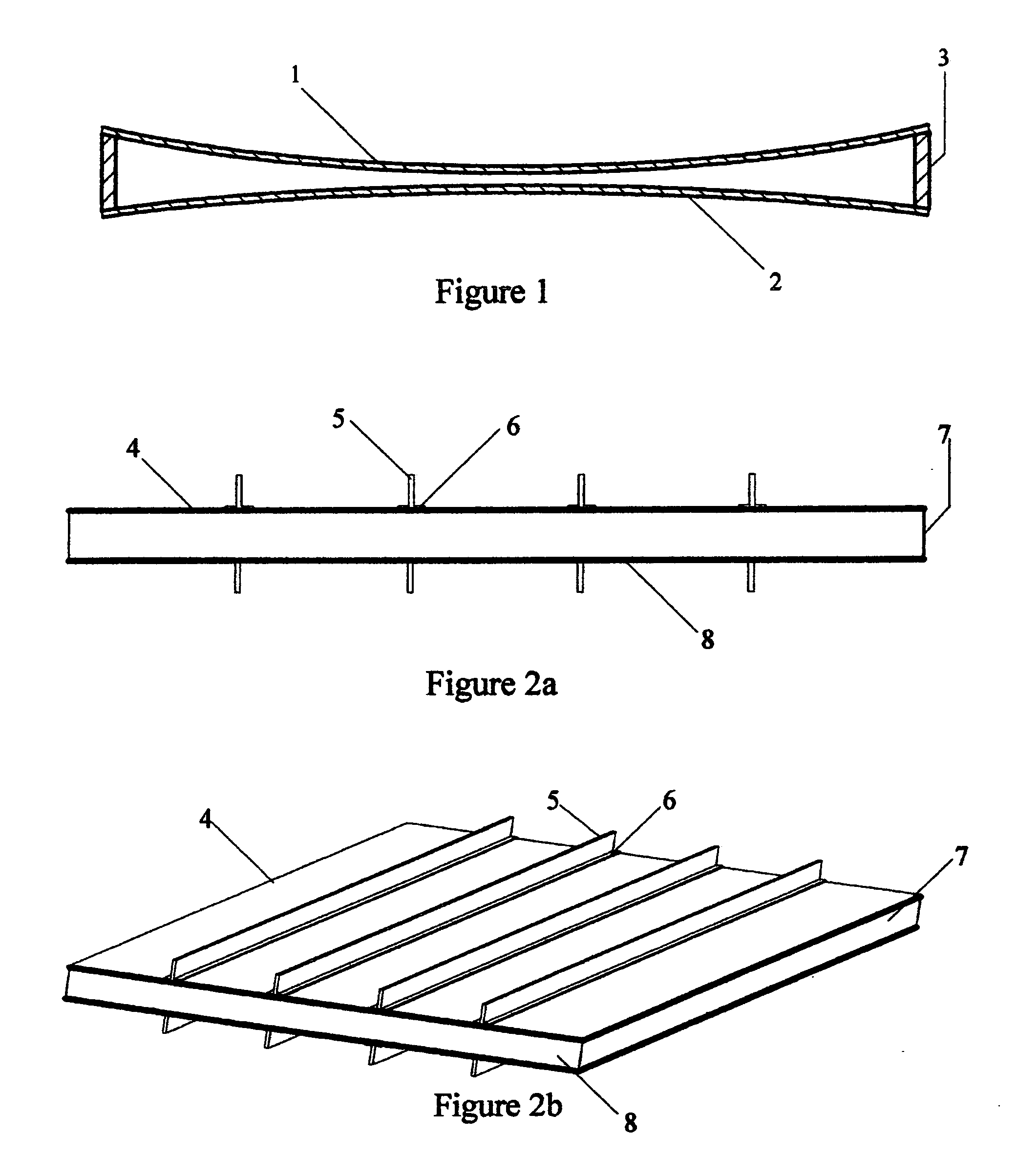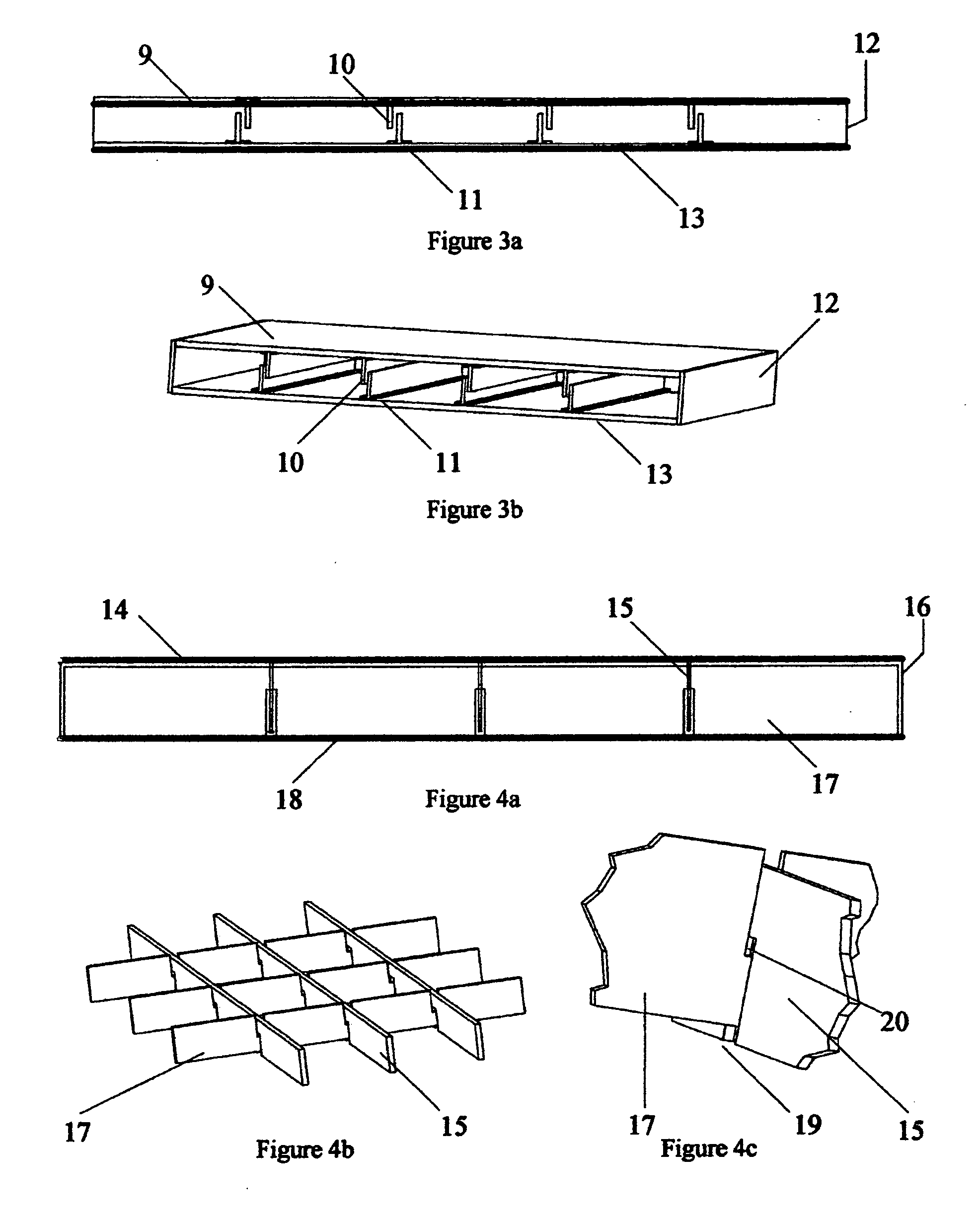Braced sound barrier vacuum panel
a vacuum panel and sound barrier technology, applied in the field of braced sound barrier vacuum panel, can solve the problems of only moderate sound attenuation efficiency, fragile and expensive panels, and underconsiderable compression of panels, so as to avoid inward flexing and prevent the effect of upper and lower sheets
- Summary
- Abstract
- Description
- Claims
- Application Information
AI Technical Summary
Benefits of technology
Problems solved by technology
Method used
Image
Examples
example 1
[0021]A square vacuum panel, illustrated in FIGS. 2a and 2b, with upper (4) and lower (8) sheets made from 0.8 mm thick mild steel and having 400 mm sides separated by a 15 mm high peripheral wall (7) made from 0.22 mm thick mild steel.
[0022]The upper (4) and lower (8) sheets were externally braced with four mild steel strips (5) 15 mm high and 0.8 mm thick having 5 mm wide fixing flanges (6). All components were assembled with epoxy resin and the enclosed space evacuated to less than 100 Pa. Placing the bracing strips externally to the panel brings them under compression by the action of atmospheric pressure on the panel.
[0023]This panel gave a sound rejection level in excess of 45 dB at both 100 Hz and 900 Hz.
example 2
[0024]A square vacuum panel, illustrated in FIGS. 3a and 3b, with upper (9) and lower (13) sheets made from 0.8 mm thick mild steel and having 400 mm sides separated by a 20 mm high peripheral wall (12) made from 0.22 mm thick mild steel.
[0025]The sheets were internally braced with four strips (10) on each sheet the strips being 390 mm long and 15 mm high made from 0.8 mm thick mild steel with 5 mm wide fixing flanges (1). All components were assembled with epoxy resin and the enclosed space evacuated to less than 100 Pa. Placing the bracing strips inside the panel brings them under tension by the action of atmospheric pressure on the panel.
The sound rejection level for this panel was found to be more than 40 dB at 100 Hz and 900 Hz.
example 3
[0026]A square vacuum panel, as illustrated in FIGS. 4a, 4b and 4c, with upper (14) and lower (18) sheets made from glass fibre reinforced polyester resin 4 mm thick having a glass content of 2.4 kg m−2. The sheets having 400 mm sides and separated by a peripheral wall (16) 20 mm high and 1.5 mm thick made from glass fibre reinforced polyester resin having a glass content of 900 g m−2.
[0027]The upper (14) and lower (18) sheets were braced internally with three interlaced strips (15) 1.5 mm thick and 15 mm high made in a particular way as shown in FIG. 4c. The slot (19) cut into the upper strip, (15) and lower strip (17), was made 3 mm wide so as to accept the placing of the opposite strip without making contact. The height of the slot in each strip was 9 mm so as to leave a gap (20) to prevent contact between the upper (17) and lower (15) bracing strips when assembled.
[0028]As the bracing strips are mounted internally the action of atmospheric pressure on the panel brings them under...
PUM
 Login to View More
Login to View More Abstract
Description
Claims
Application Information
 Login to View More
Login to View More - R&D
- Intellectual Property
- Life Sciences
- Materials
- Tech Scout
- Unparalleled Data Quality
- Higher Quality Content
- 60% Fewer Hallucinations
Browse by: Latest US Patents, China's latest patents, Technical Efficacy Thesaurus, Application Domain, Technology Topic, Popular Technical Reports.
© 2025 PatSnap. All rights reserved.Legal|Privacy policy|Modern Slavery Act Transparency Statement|Sitemap|About US| Contact US: help@patsnap.com



